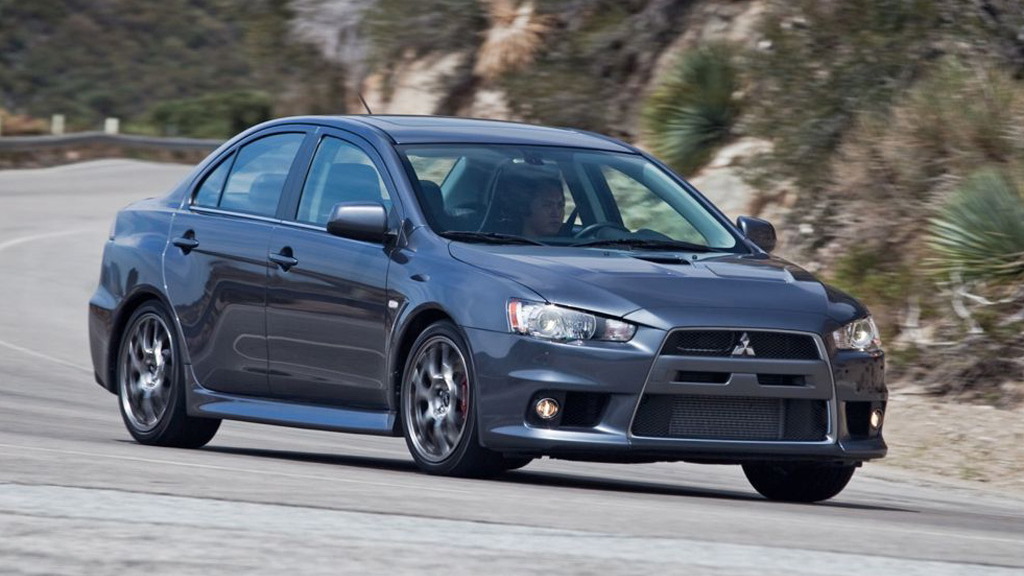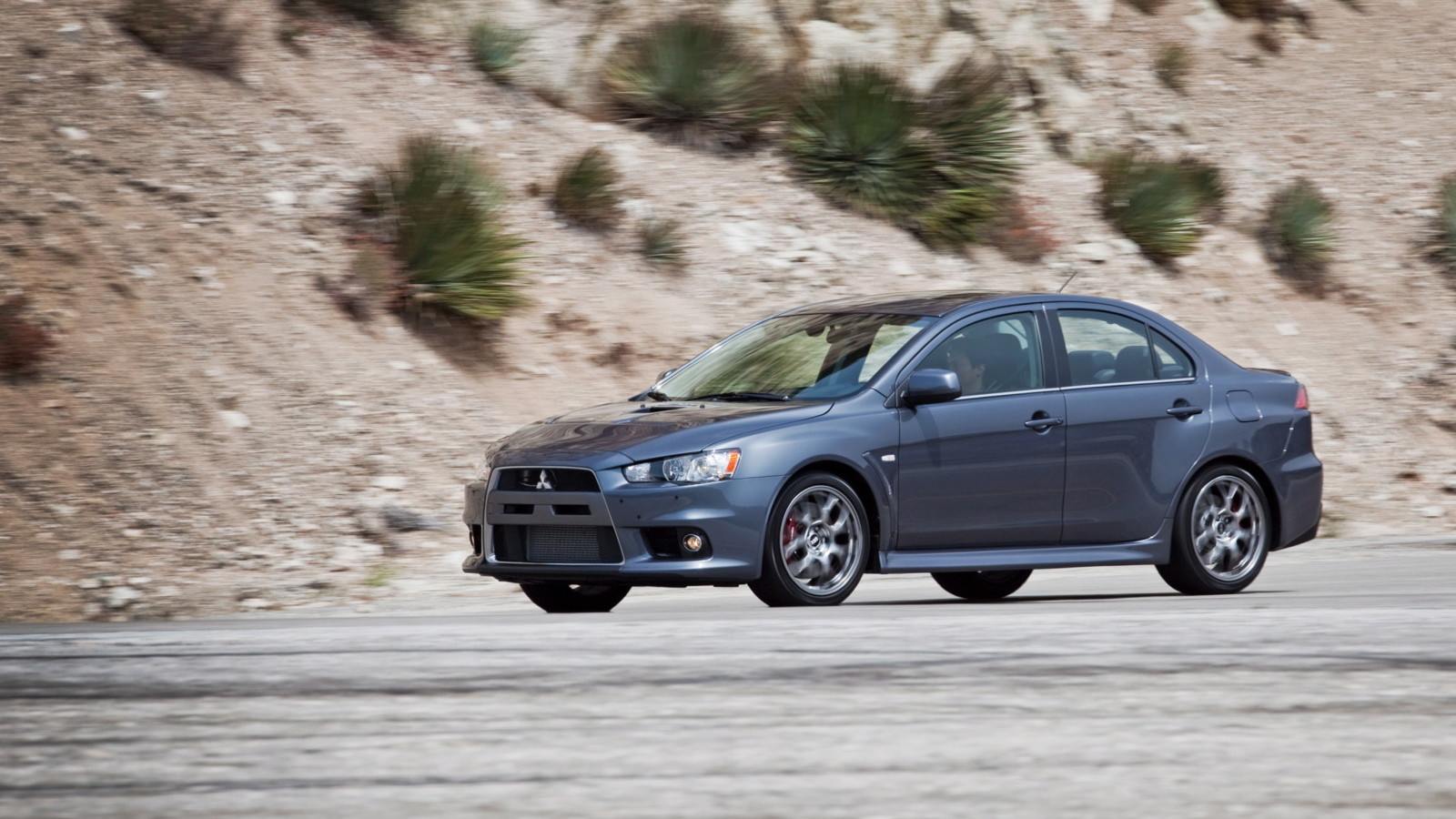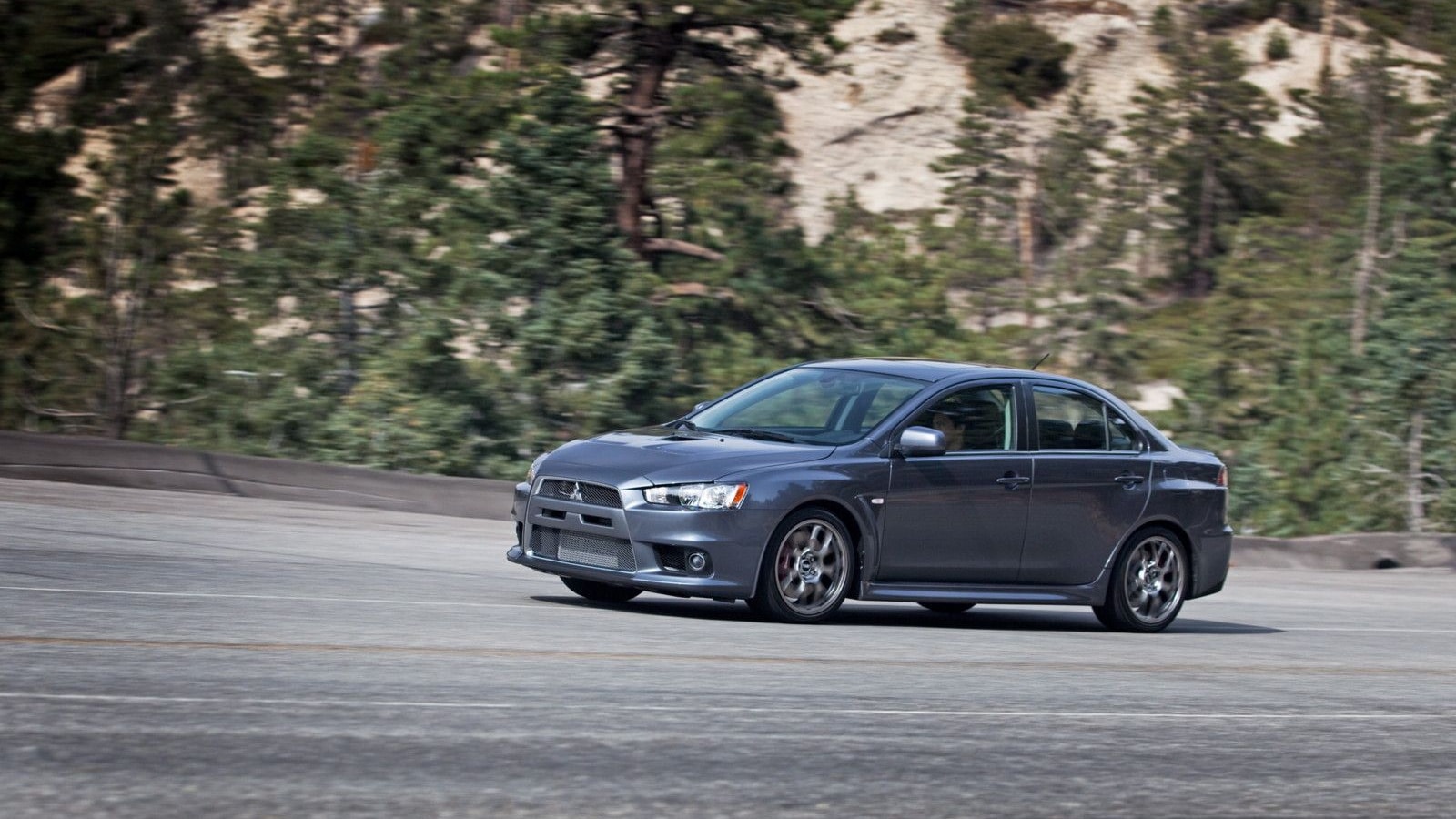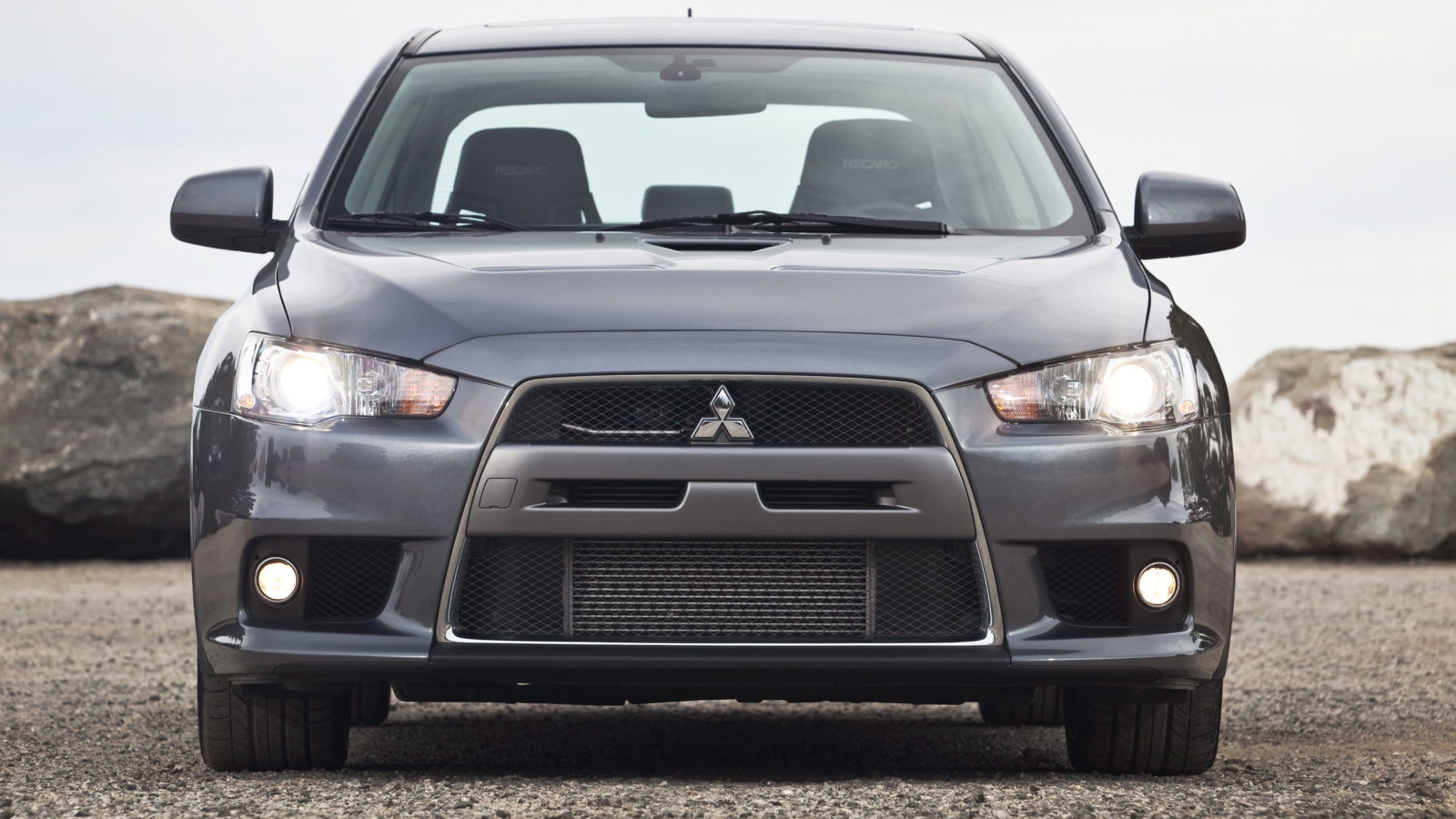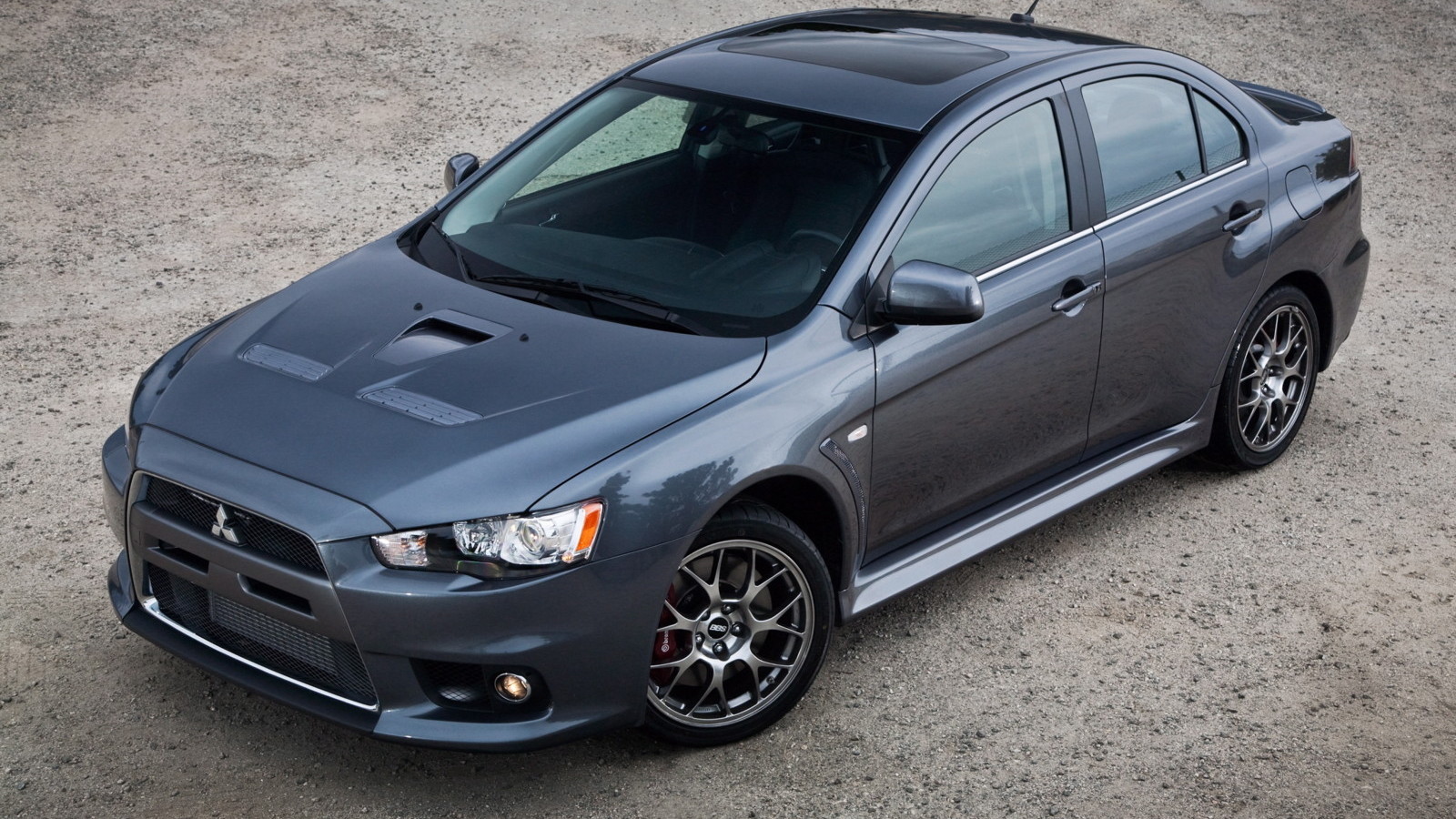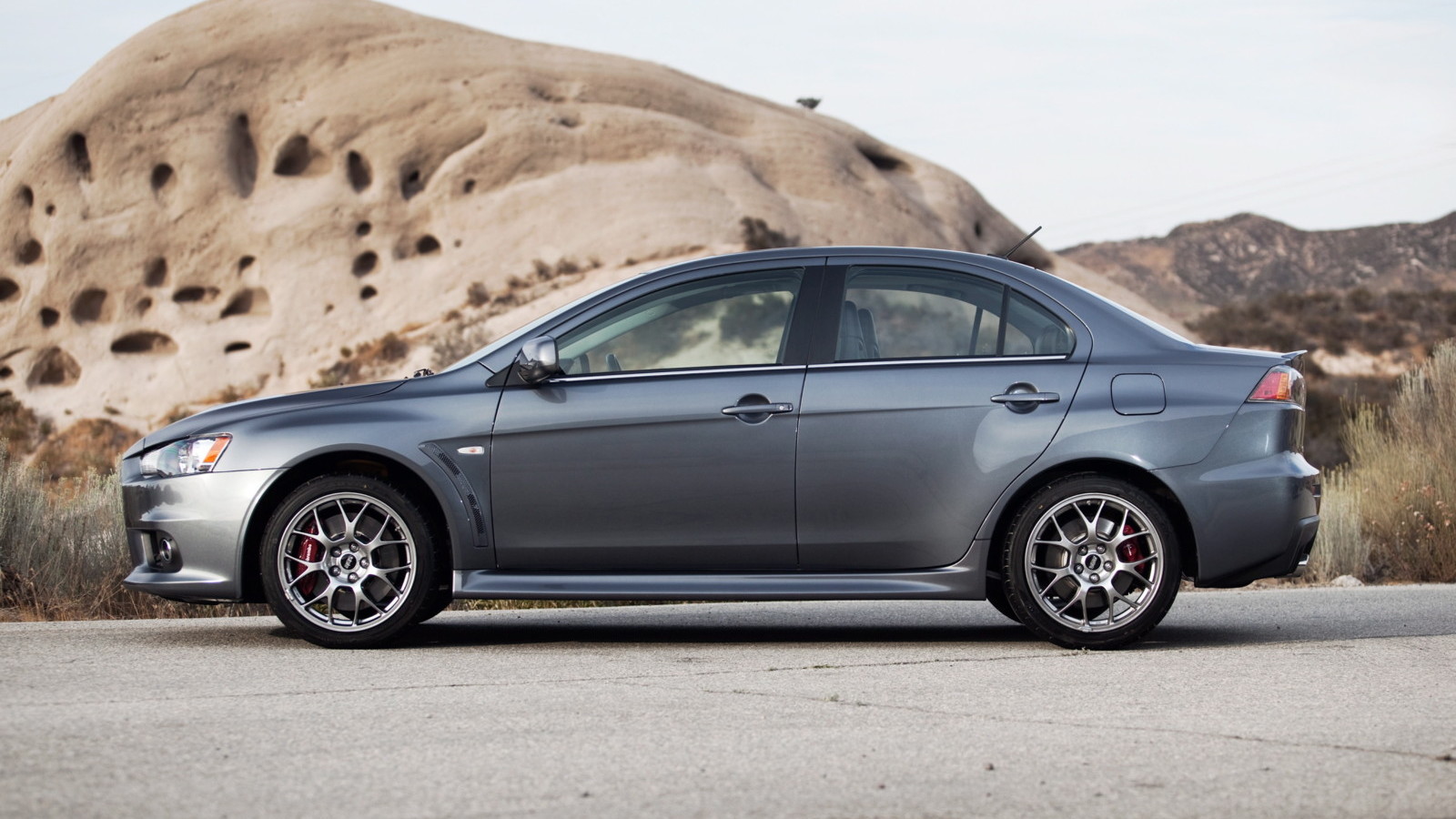My 18-year-old nephew, on a visit to our house for a barbecue, took one look at this car in the driveway and said, “Um, when?” As in when would he get a ride.
His dream car, this car, had arrived. He’s even “driven” various Evos of various years in various virtual incarnations on his Xbox 360.
An Evo in any model is very cool not only to my nephew, but to an entire generation of 15-30-something males worldwide largely because while few of them have actually even sat in an Evo, gazillions of hours of driving has been done in these cars by such boys/men, if only virtually.
And you can’t deny that Mitsubishi and Subaru, of all the makes on the market, have done more with less when it comes to hyping their respective brands via their rally-bred models (both the WRX and WRX-STi deserve credit in the Subaru camp).
In fact the juxtaposition between the rest of the Subaru/Mitsubishi lineups and these hot hatches/sedans is stunning. Neither make sells anything else even remotely libidinous when measured against their most aggressive cars, and while brands as broad as Ford also race in many realms, it’s arguable that even Ford shows more verve in many different genres of its street cars, from the Raptor F-150, to the Taurus SHO, to the Mustang to the new Fiesta.
No such argument can be made at Mitsubishi. Which is too bad, because there’s a ton of good here that would be wonderful if it were sprinkled more widely around the brand.
All Star Cast
If we’re grousing about what you won't find in other Mitsubishi product, let’s start with the absolutely telepathic steering in the Evo MR. On-center, the car tracks as true as a freight train; mid-drift (stability control off) you can balance the MR perfectly through a bend, playing right on the edge of adhesion from the 40-series Yokohama Advan tires—which are by the way attached to some very pretty custom BBS wheels. And breakaway, too, is totally predictable, so you can blaze the Evo hard, always knowing that there’ll be some softening toward the limits rather than any scary, sudden hitting-ice skid. Over play your hand and if you know what you’re doing (and again, thanks to that cunning steering) you can “catch” the Evo with a quick counter steer.
In a word, the Evo MR exhibits perfect handling harmony, a trait that’s very rare even in the performance-car realm.
Cosmetically, besides those nice wheels, there’s a small lip on the trunk lid rather than a massive (and cop-baiting) whale tale. Inside, standard buckets are replaced by body-hugging Recaros.
But…the Evo MR is far from perfect.
The twin-clutch SST manumatic has its advantages. You get to play hero by balancing throttle input and trail-brake to set the butt of the Mitsu out of bends (just like my nephew on his Xbox!), which is great, and probably delivers more control than you’d find from a manual gearbox. That said, the Normal, Sport and S-Sport modes of this tranny aren’t especially useful. The latter quickens the uptake of manual shifts without any shift shock and we’d pretty much leave the setting there; Normal is an ideal setting if you’re stuck in traffic and letting the car shift for itself (rather than via the twin paddles that bracket the leather-wrapped steering wheel), but shifts are too slow in Normal if you’re toggling gears with your hands.
And in all, this gearbox is decidedly unsatisfying in feel. Whereas many other performance-car makers have switched to twin-clutch systems that provide the tactile essence of driving a genuine manual, with not just astonishingly quick gear uptake but other bonuses, like aurally rewarding rev-matching, the SST is about as passionate about its work as an assembly-line robot. It does the job, but you never want to shake its hand for the joy it’s given you.
Aural Blahs
No doubt, any engine that blasts out 291hp from a tiny 2.0-liter displacement gets our respect. Hell, Mitsubishi even manages torque delivery fairly early in the rev curve, peaking to 300 lb. ft. at 4,400rpm. Compared to, say, a Honda S2000 where full torque doesn’t hit until just shy of redline, the flatter curve in the Mitsu is more useful and less upsetting to the suspension, which also makes it an easy car to control at speed.
But this engine at its very best simply sounds hoarse. An inline-six 335i or even the V-6 of the 370Z have a personality and express their mechanically pure voices from idle right up to redline. They sound, simply, like engineering might. The Mitsu sounds brash rather than slick. Again, it gets the job done, it just doesn’t sound as good as it actually is.
Inside…. It’s Just like an Xbox!
Given the crowd of fanboys who mobbed me in every parking lot when they saw the Evo coming, it’s only natural that everything about the cockpit would focus toward a videogame-like ambience, from the massively comfortable Recaro leather seats, to the 710-watt Rockford-Fosgate sound system which, true to my nephew’s desires, produced very loud sounds (audiophiles - shop elsewhere), to the color LCD for controlling said audio and other in-car info-tainment.
Tough Sell
Here’s the but…. Said Recaros are fabulous for comfort, but not so fab for drivers lacking very long torsos. Even some six-footers found it tough to get comfortable behind the wheel. Yeah, the fan boys like to sit low, like their hip-riding jeans, but hero driving demands heroic outward vision - if you’re sitting in a hole you can’t see the edges of the car. Taller drivers can get more comfortable in the Evo MR, but our point is that there’s no excuse for a $43,959 car not to be equally comfortable for people of many shapes and sizes. For that kind of money, Mitsubishi might expect this car to compete for market share against the Infiniti G series coupe, 1 and 3 series BMWs, as well as Audi’s S4 — all of which offer superior outward vision to a more varied pool of potential buyers.
Fans of the Evo will love this car, because they favor performance over all all else. But given the price tag and the target — someone who wants a less conspicuous Evo — it’s hard not to see where this Mitsubishi comes up short of the mark.
An example: Plastic. Everywhere you look in this cabin you see it, and it’s not the high-grade stuff of Golfs costing $15-$20k LESS. It feels down market; the garish, shiny plastic three-diamond logo at the center of the steering wheel is to BMW’s badge what the KMart sign is to a Tiffany box. Not. The. Same. League. Tap one of the plastic buttons to control a climate function and you’ll feel it creak under your fingers like the handle of an old porch-swing door.
“If it rips the tailpipes off a BMW, what do I care about refinement?”
Yep, that’s the die-hard’s protest.
But if you’ve driven other Mitsubishis, with more polished cabins, you know the cockpit here could be better, too, that it would seem feasible for Mitsubishi to infuse this car with a slick cabin and other Mitsubishis with just some small percentage of this car’s tremendous dynamics. And the formula already exists. It’s called Mazda.
